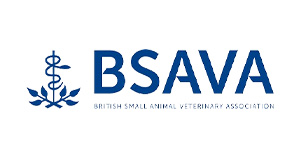Heifer success and profitability of suckler cows
Publish on: Sep 15, 2022
For suckler cows to be most profitable, calving for the first time at 24 months old is considered optimum. Research suggests that calving heifers for the first time at this age is pivotal for reducing the cost of production and increasing lifetime reproductive performance, but how do we achieve this?
Heifer success is underpinned by nutrition, genetics, and selection.
A Shepton herd case example
A small herd of 15 suckler cows and heifers on a mainly grass based system. The farmer wanted to breed successful replacement animals as well as producing good quality calves for sale. This farm does not have a bull.
Nutrition:
This has a significant impact on age at puberty and rebreeding weights. Without monitoring, measuring, and managing this, calving heifers at two will be a challenge.
This farm has started monitoring BCS at important times in the production cycle, currently they do not have weight scales, but that is the next purchase. The have also started utilising forage analysis.
Genetics:
The age at which a heifer reaches puberty, along with other maternal attributes, is also influenced by genetics. Understanding what traits to focus on is essential. Terminal sire traits which are often focused on are likely to produce a good, finished beast, but are unlikely to be right for the future suckler cow of the herd.
This farm is looking at breeding their own replacement from AI bulls which they have selected specifically based on maternal traits.
Selection is key:
We should not try to keep unsuitable heifers within the herd. Creating weight targets, implementing tight breeding patterns, and applying rigorous selection criteria to ensure that only the most productive heifers enter the herd.
Using synchronisation, this farm has bred their heifers 2 weeks before the cows, AI was very successful with 86% in calf for the heifers to first service and 75% in the cows. Animals have only been bred for 8 weeks with the heifer’s front loading the block. This will mean that there is a nice compact calving block with extra time allowed for the heifers to recover before next service.
Tools for assisting with heifer selection:
Vet heifer pre breeding exams – at these examinations we carry out reproductive tract scanning to the heifer is cycling properly. Pelvic measuring in addition to the pre breeding examination can first where there is a small pelvic area or an abnormal pelvic shape result in elimination from the breeding cohort ton reduce the potential risk of dystocia and future poor performance.
We carried out pre breeding examinations in the heifers this time, including assessment of BCS and temperament. We checked with the ultrasound the uterus and ovaries to see if they were cycling and measured pelvic size all animals met the minimal criteria for breeding.
The use of EBVs to reduce the risk of fetal oversize – used in conjunction with the pelvic measuring of heifers – can reduce cases of dystocia and improve overall production. Dystocia costs money in both direct costs – such as veterinary bills, farm labour, caesareans, dead calves and injured downer cows – but also indirect costs, such as reduced cow fertility, increased culling rate and cows that calve later in the calving pattern the following year.
On this farm 3 sires were selected. The sire used on the heifers was one selected for calving ease to give the heifers the best chance of calving without problems. A sire with strong maternal traits was selected for breeding to produce replacements.

Author –
Rosie Lyle
Learn how to optimize heifer rearing practices to achieve earlier calving, improved fertility, and increased productivity. Discover the importance of nutrition, genetics, selection, and health management for successful heifer development.
#HeiferRearing #Calving #Productivity #Fertility #Nutrition #Genetics #Selection #DairyFarming #FarmManagement #AnimalHealth











